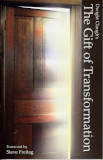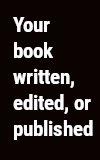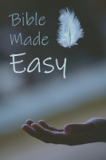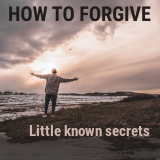
I’ve written 20+ books, and I’ve helped dozens of clients write and/or publish their books. I know I can help you.
First this!
Yes, someone out there needs your book. Someone out there will read it and benefit from it if you follow these steps. You have a message that someone else needs, and it’s just a matter of finding the right way to get it across.
Here’s what you need to know:
Step #1 Set some goals
How do you want your reader’s life to be different as a result of reading your book? What if anything do you want your reader to do in response to your book? Think about it, write it down, and refer back to your answer frequently.
What do you want your book to do for you? For some people, a book is a brochure—it helps them get clients or customers. For some people, a book is part of your legacy—it helps them convey a message to the next generation. For some, a book helps establish your credibility. For some a book is a profit center. For some, a book is an opportunity to express the story, the art, the message that is inside you. Again, think about this, and write it down.
How soon do you want to get your book in print? If you have plenty of time on your hands, you can probably get it written and published in six weeks. If you don’t have much free time, give yourself a few months.
HINT: Don’t start with a 500 page book. Your first book should be somewhere between 10,000 and 25,000 words (less, of course, for a children’s book). Most word processors have a word counter, if not, you can find one online. My book, How to Write and Publish Your First Book was 24,000 words, and it came out to 112 pages (6” x 9” trim size). My book, Rethinking Our War on Poverty was 19,000 words, and it came out to 110 pages (5” x 8” trim size). Aim for a book that size. That way you get it done.
Step #2 Identify your reader
Your book isn’t for everybody. Sorry.
Actually, that’s a good thing. The more you can define who your reader is and why that reader will want to read your book, the more successful you’re going to be with your book.
Identify a specific reader: single moms in their 30s, professional chefs, backyard mechanics, space opera sci fi fans, or whatever. When you identify your reader, you make it much, much easier to sell your book. You should know who your reader is before you write your book. It helps you include and exclude material based on your reader’s interests.
Take some time, think about this, and write down your answer.
Step #3 Write an outline or a summary
You want to make sure that you have all the elements you need arranged in an order that’s going to make sense to your reader. For me, this is always the hardest part. After this, it’s all just filling in the blanks.
Here are some thoughts on the elements you need to include:
MEMOIR/AUTOBIOGRAPHY: Telling your life story? Lead us to those defining moments, those moments when you were forced to grow. What was it like to be you before, during, and after the crisis? How did you grow? What was your takeaway? It doesn’t hurt to include humor. But do be careful about what information you share about other people. Slander, libel, or invasion of privacy can get you into a lot of trouble. If you’re not sure, consult an attorney.
NONFICTION/HOW-TO: Who is your reader and how will your book help them? You’ll want to include that up front. Remember that your reader doesn’t know as much about your topic as you do. That’s why you’ll want to include plenty of explanations, examples, stories, case studies, diagrams, illustrations, or whatever you need to very clearly communicate what you want to get across. Usually how to books are written directly to the reader using “you” and “your.” For example, you’ll have sentences like these: “When designing your book, you’ll want to use a font that’s easy to read like Garamond.”
FICTION: If you’re writing a novel or some other kind of story, then here’s what you need: (1) a hero your reader will care about, (2) a problem s/he needs to solve, (3) a villain or force opposing your hero, (4) a crisis that forces your hero to grow before the problem is finally solved. Without a hero your reader cares about, nobody will read your book. There needs to be real stakes for your hero. The strength of your villain is the strength of your story. If your villain is too small, your book will be a yawn. Conflict is story. Your hero needs to grow. Look up “character arc.” You also need to read Save the Cat by Blake Snyder. Even though it’s a book on screenwriting, you’ll get incredible insights on structuring your story. Common mistakes people make writing fiction: Too many minor characters—your reader can’t keep track and doesn’t care, straying too far from the central conflict, and starting in the wrong place. Hook us on page one or we’ll put the book down and never read it.
CHILDREN’S: My experience with children’s books is more limited; I’ve only worked on three or four. But you will want to identify the age range or grade range that you’re targeting. I strongly recommend you look at several books targeted for the same age group. Look at how many words are on the page, the size of the font, the vocabulary, the number of pages, the number and type of illustrations, and so on. It would help to talk to an elementary school teacher or a children’s librarian to get specific suggestions.
Step #4 Write a horrible first draft
That’s right. Horrible. Here’s why. You don’t wanna get bogged down. If you get bogged down, you’ll never get done. Do you hate that paragraph you just wrote? Don’t worry about it. You’ll fix it later. Go on to the next one. We’ll get it right in Step #5.
HINT: Stuck? Write a different part of the book. You can come back to the part you’re stuck on later. I often write the beginning of the book at the end. It’s just easier to start in the middle.
MORE HINTS: Still stuck? Give it a rest for a few hours or a day. Work on something else. Even professional writers like me get writer’s block. You’d be surprised how many fresh ideas you’ll have in the morning. Also, be aware that different people compose differently. Some people like to use voice to text to create their first draft. Others prefer to write it out longhand on a legal pad. Some are best in front of a keyboard. I’ve done all three.
IMPORTANT: Your first draft can be horrible, but it needs to be original. You can’t just download pages and posts from the Internet, slap it together, and call it a book. That’s called plagiarism, and it’s illegal. You can copy other people’s ideas (it’s polite to reference them), but you can’t copy their words. You cannot use someone else’s image or artwork without permission. And be very careful about using song lyrics. For more information, Google “copyright and fair use.”
Step #5 Rewrite and edit
Once you finish your first draft, put it away for a couple days. Then you can come back to it with fresh eyes.
When I rewrite/edit for a client, here’s what goes through my mind:
A. Will this make sense to the reader? If it doesn’t make sense, we gotta rewrite it. Think about presenting the information in a different sequence, or approaching it a different way.
B. Are we including everything the reader needs? If not, let’s add it.
C. Is it interesting? If not, can we include conflict, case studies, stories, illustrations, or something else to make it interesting?
D. Is the writing tight? Action verbs. Fewer adverbs. Active voice. Sentence variety. Omit needless words. (Strunk & White) If possible, are we avoiding using the same word multiple times in the same paragraph?
E. Are we using the right words? I see this all the time, and I mean all the time, even from clients who have PhD’s. People use one word, for example, perimeter, when they mean to use another, for example, parameter. If you’re not 110% sure what a word means, Google it.
F. Have we verified all the facts, quotations, statistics? Fact check. Google makes it easy. (Just so you know, I often see people misquoting the Bible. They think they know what a verse says in a given translation, but when we look it up, we find different words. In addition, some quotes are commonly attributed to certain people—Einstein, for example, but when you look them up, you discover that he never said any such thing.)
G. Are we being consistent throughout the manuscript with usage? For example, are you using the number 5 in some sentences, and writing out the word five in others?
H. Are we avoiding common word substitutions? For example, “your” for “you’re,” “then” for “than,” and so on.
I. Have we corrected all grammar, punctuation, capitalization, and spelling errors?
Give yourself plenty of time to make these revisions. Your book probably won’t be ready to publish on the second draft. It will probably take another two or three rounds of revision before you get it where it needs to be. Just remember, we pros need to revise our work also, and it sometimes takes us three or four drafts or more.
Book title: Make sure that your title is unique. Check Amazon to make sure other books don’t have the same title, or if several books from several authors that are NOT part of the same series have your title, make sure your subtitle and cover design are very different. Your title should grab interest, and your subtitle should explain what your book is about.
HINT: Sometimes I’m working on a book, and I need to do major surgery. I realize that the flow of thought is all wrong. Here’s what I do. I set up an 8-foot folding table. I print out the section I’m reorganizing, and then I cut out each individual thought—it might be a sentence, a paragraph, a couple pages, or even just a phrase. Then I lay it out on the table the way it needs to be. Then I tape the sections in the new order onto legal paper and use that to guide my editing on my word processor.
HINT: Be sure to include a title page, a copyright page, a dedication if you want it, and a table of contents. I recommend using an automatically generated table of contents. LibreOffice and MS Word both have utilities that allow you to do this. Be sure to update it as a last step before finalizing your document. A foreword (NOT forward) is customarily written by another person (not you), usually someone more well known than you. Include if appropriate. You may also want to include an “about the author” section, as well as footnotes, endnotes, references, resources, glossary, index as appropriate. Your copyright page will include your paperback ISBN which you will get in Step #7. I do NOT recommend including a preface or an introduction because people don’t read them. Why start your book with something people aren’t going to read?
Step #6 Design it right
This is where most new authors mess up big time. Great book, poor packaging. Nobody reads it. People assume it’s no good.
You don’t want that.
Now is the time to look at some books, especially books in your category that have sold well. Look at how they are designed, inside and out.
INSIDE: Look at the margins, the size of the font, the font selection (HINT: you do NOT want Times New Roman, and you CERTAINLY do NOT want Comic Sans), the spacing between paragraphs, the spacing between lines, the alignment of text, the use of headings, the position of page numbers, and so on. In most cases, you will NOT want any color in your book’s interior. If you have even one speck of color in the interior, the cost of printing your book doubles or triples. If you have color photos, colored text, or other color elements, you’ll usually want to convert them to black and white or grayscale.
OUTSIDE/COVER: Look at the colors used, the images used (if any), the spacing, the spine, the back cover, the fonts used, the size of the font. While you can’t completely copy someone else’s cover, you can use several book covers as inspiration for your own design.
When I design the inside of a book, I often use the following specs: 6×9 trim size (six inches wide, nine inches tall) or 5×8, mirrored margins with inside margin of 1.2 inches and outside of 0.7 inches. Also 0.7 inches top and bottom. Page numbers at the outside bottom margin, and in same font as the text. Text set in Garamond, usually 11 point, with 105% to 110% spacing, with .06 to .12 inch space below paragraphs and a 0.2 to 0.25 indent on the first line of each paragraph. I use full justification on paragraphs of text, and left justification on headings and sometimes on footnotes. I often use a sans serif font like Calibri or Oswald for headings, and I make use of styles in LibreOffice to make sure that similar elements all look consistent. But there’s often good reason to deviate from these options to use other approaches to design.
When I (or my graphic designer son Hans) design a book cover, we’ll use Photoshop or a similar program to create a single file that has the front cover, back cover, spine, and bleed at 300 dpi. You’ll get the spine and bleed settings from Amazon (see Step #7). I keep a spreadsheet to let me know where the trim lines and margins are based on the trim size and the page count. You’ll want to include, if you can get them, blurbs or endorsements from others on your back cover.

Step #7 Publish on Amazon
Why not a traditional publisher? Ninety-nine percent of the time traditional publishers won’t even talk to you unless you have an agent, and agents won’t talk to you unless you have a platform. By platform, I mean 10,000 or more followers on Facebook, Twitter, YouTube, or Instagram, or an email list with 10,000 people on it. You can waste a whole lot of time banging your head against the wall trying to get a traditional publisher to pay attention to you, or you can get your book in print in the next 72 hours on Amazon. Even if you can get a traditional publisher to publish your book, marketing it will be mostly up to you, and you’ll end up with a smaller slice of the pie than you will if you self publish. BTW, don’t publish with a traditional publisher without an agent.
I’ve been doing this for a while, and I’ve seen people use other publishing services other than Amazon, and almost always they regret it. Amazon is free, you only pay for author’s copies, and you don’t even need to order any author’s copies unless you want to. (And author’s copies are steeply discounted from the retail price.)
WARNING: There are many publishing “services” out there who prey on the ignorance of first time authors. Most of them are complete rip offs. If you must use another publishing platform, PLEASE read all the fine print carefully. You’ll probably be surprised what rights you’ll find yourself signing away, and what hidden expenses you’re signing up for.
Here’s how to publish your paperback book with Amazon.
Make sure you have an Amazon account. If you don’t already have an Amazon account, get a user name/email and password.
Then sign into kdp.amazon.com and you’ll need to complete banking and tax information. Reason: When people buy your book from Amazon, then Amazon will want to pay you. They can’t pay you without banking and tax information.
Then go to Create a New Title and click paperback. You’ll enter basic information about your book’s title, author, description, and so on.
On the next tab, you’ll have a choice of supplying your own ISBN (International Standard Book Number) or getting a free one from Amazon. Unless you have a reason to supply your own, just get the free one from Amazon.
Copy and paste your ISBN into the copyright page of your book. Then export your interior and cover files as pdfs, and upload them on this page. Be sure you’ve selected the correct trim size.
Amazon will create a bar code for you for the back cover of your book. You don’t need to do that yourself. But you do need to leave space on the back cover for that bar code.
Fill in pricing and distribution information. Then you have the option of proofreading your book online and/or ordering a physical proof copy. I usually recommend that first time authors order a physical proof copy. Once your book is the way your want it, then you can submit it for publishing. Amazon will take a couple days to review the files to make sure they meet their printing specifications, and assuming there’s no problem there, then your book will be live on Amazon.
Want to do an e-book version? The process is pretty similar, only this time there’s no ISBN, and you won’t be uploading a pdf. Usually, you will save a copy of your book’s interior in MS Word (*.docx) and upload that, allowing Amazon to convert the file to the e-book format. If you used an automatic table of contents generator, then your table of contents will be clickable in your Kindle e-book. In some cases, where you have a great deal of formatting in your book, you’ll want to use Amazon’s Kindle Creator software to create the file that you’ll upload for your e-book.
And then you’ll create a *.jpg file of your front cover only (be sure to remove the back cover, spine, and bleed), and upload that.
Kindle e-books offer a choice of two royalty programs: 35% or 70%. In most cases, you want to use the 70%, but it does create some limitations on pricing, and certain costs are deducted before the 70% is calculated. Here you can preview your book before submitting it for publication. Again, Amazon will review, and your book will be available in a couple days.
Congratulations! You have just authored and published your book!
Need help?
I provide writing (ghostwriting), rewriting, editing, design, and publishing services to help you through any or all of the steps described above. I would love to see what you’re working on and help if I can. Details are here.
Or, another alternative …
I’ve taken my twenty years of authoring and publishing experience and boiled it down to a step-by-step process that will empower you to write and publish your first book. Start the this course for free—no credit card, no sign up—and if you like it, pay a modest course fee to finish it.















